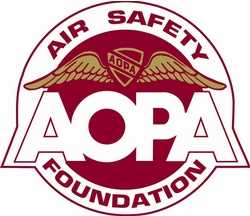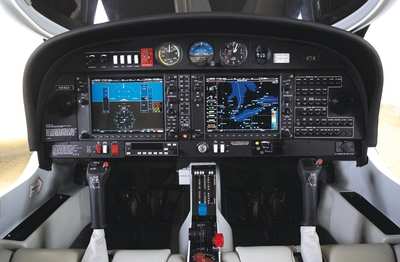But Nothing Beats Vigilance And Good Judgement
 Technologically advanced aircraft
(TAA) have fewer accidents when compared to the overall general
aviation (GA) fleet, according to an updated study published by the
AOPA Air Safety Foundation this week. However, the pilot adovcacy
group stresses no amount of technology can replace a pilot’s
vigilance and good judgment.
Technologically advanced aircraft
(TAA) have fewer accidents when compared to the overall general
aviation (GA) fleet, according to an updated study published by the
AOPA Air Safety Foundation this week. However, the pilot adovcacy
group stresses no amount of technology can replace a pilot’s
vigilance and good judgment.
"Light GA pilots are now undergoing the transition that the
airlines and corporate pilots underwent in prior decades," states
the Air Safety Foundation in the report. "Training requirements
center on differences in new-design TAA handling characteristics
and the addition of capable but complex avionics packages."
There are three categories of TAA aircraft: newly designed
aircraft; newly manufactured classic design aircraft equipped with
new avionics; and retrofitted existing aircraft of varying ages.
For the purpose of this study, ASF focused their research solely on
glass-cockpit aircraft.
The analysis of accidents that occurred between 2003 and 2006
shows that TAA have proportionately fewer accidents than the
overall general aviation fleet. While TAA account for 2.8 percent
of the GA fleet, they were involved in only 1.5 percent of the
accidents.
"As more TAA begin entering the flight training market,
we’ll look for changes in the accident statistics," said
Bruce Landsberg, executive director of the AOPA Air Safety
Foundation. "There’s a potential for more takeoff and landing
accidents when these aircraft are used more for instructional
missions."
Fuel monitoring and warning systems in TAA have advanced to the
point where there was not a single fuel-related accident reported
in the Air Safety Foundation’s study. In other general
aviation aircraft, fuel management accidents occur at a rate of
almost three per week.
The TAA report did note a significant number of weather
accidents. Of all fatal TAA accidents during the study period, 44.4
percent were weather-related. As with legacy aircraft, which use
traditional avionics and instruments, visual flight rules (VFR)
into instrument conditions is a leading cause of weather accidents.
The Air Safety Foundation will continue to provide educational
material to the pilot community to help bring these numbers
down.
Training in TAA is different than with legacy aircraft, and the
Air Safety Foundation dedicates a portion of its report to
outlining specific training goals with TAA. As with all types of
aircraft, initial training begins on the ground. However, with TAA
the ground portion is much more extensive than with legacy
aircraft.
The Air Safety Foundation encourages all pilots to begin
training for TAA with either CD/DVD, simulator, flight-training
device, or Web-based training, or a combination of those options. A
working knowledge of the avionics systems and how to program them
should take place on the ground before pilots begin training in the
aircraft. Rushing into the aircraft before grasping the avionics
operation is an expensive way to learn and may increase the chance
of a midair collision where both pilot and instructor are spending
too much time focusing inside the cockpit learning the equipment
and not enough time looking outside.

The report, "Technologically Advanced Aircraft: Safety and
Training," is available online at the FMI link below.
 NTSB Final Report: Rutan Long-EZ
NTSB Final Report: Rutan Long-EZ ANN FAQ: Turn On Post Notifications
ANN FAQ: Turn On Post Notifications Classic Aero-TV: ICAS Perspectives - Advice for New Air Show Performers
Classic Aero-TV: ICAS Perspectives - Advice for New Air Show Performers ANN's Daily Aero-Linx (06.28.25)
ANN's Daily Aero-Linx (06.28.25) Aero-News: Quote of the Day (06.28.25)
Aero-News: Quote of the Day (06.28.25)




